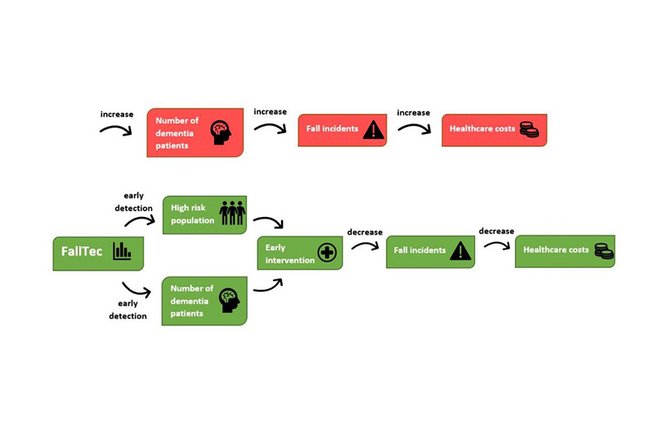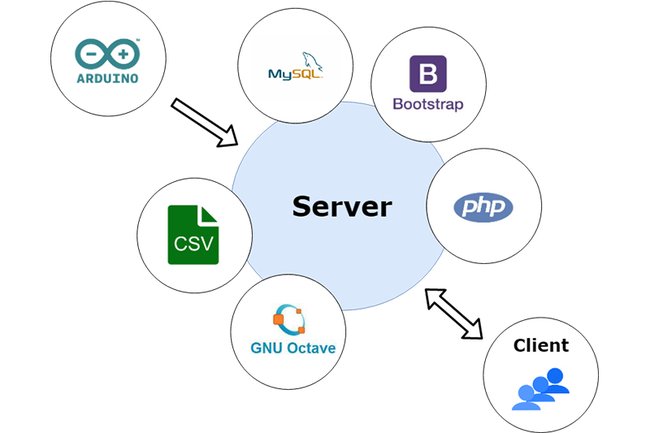Breadcrumbs
- Digital Healthcare
- Projects
- FallTec: Sensor-based fall prevention for patients with dementia
FallTec: Sensor-based fall prevention for patients with dementia
The aim of this project is to develop a fall risk assessment system, which can help to detect fall risk at an early stage and therefore prevent future falls

Dementia increases fall risk
Many elderly people suffer from the consequences of falls, which cost around 32 billion euros per year in the European union [1]. It is scientifically proven, that falls reduce the quality of life and statistically lead to an earlier death.
Another problem for elderly people is cognitive decline and dementia, which increase the risk of falling by 200-300% [2]. Within the population of dementia patients, there are subjects with significantly higher risk of falling, which can be detected by analysing their gait [3].
Furthermore recent studies have shown, that gait parameters such as lower step frequency and higher stride length variability do not only indicate a higher fall risk for patients with dementia but are also useful for the prediction of a future dementia for cognitive healthy elderly people [4]. Nowadays society is statistically growing older and dementia is becoming a big issue for the healthcare system.

Dementia increases fall risk | Copyright: Elias Matousek, Isabel Kaechele, Juergen Maureder, David Kollmitzer, Philipp Koecher
How FallTec can help
The aim of this project is to develop a fall risk assessment system, which can help to detect fall risk at an early stage and therefore prevent future falls. If the sensor is being worn by a patient with dementia, the collected data will be screened in our web-based application, which analyses the data and visualizes the individual fall risk. In the future FallTec can be a very useful tool for preventing falls, increase quality of life and reduce healthcare costs caused by falls.

How FallTech can help | Copyright: Elias Matousek, Isabel Kaechele, Juergen Maureder, David Kollmitzer, Philipp Koecher
References
[1] S. Turner, R. Kisser, and W. Rogmans, “EuroSafe Falls Report EU-28.” European Association for Injury Prevention and Safety Promotion, Jun-2015.
[2] J. Härlein, T. Dassen, R. J. G. Halfens, and C. Heinze, “Fall risk factors in older people with dementia or cognitive impairment: a systematic review,” J. Adv. Nurs., vol. 65, no. 5, pp. 922–933, May 2009.
[3] E. Dolatabadi, K. Van Ooteghem, B. Taati, and A. Iaboni, “Quantitative Mobility Assessment for Fall Risk Prediction in Dementia: A Systematic Review,” Dement. Geriatr. Cogn. Disord., vol. 45, no. 5–6, pp. 353–367, 2018.
[4] O. Beauchet et al., “Poor Gait Performance and Prediction of Dementia: Results From a Meta-Analysis,” J. Am. Med. Dir. Assoc., vol. 17, no. 6, pp. 482–490, Jun. 2016.